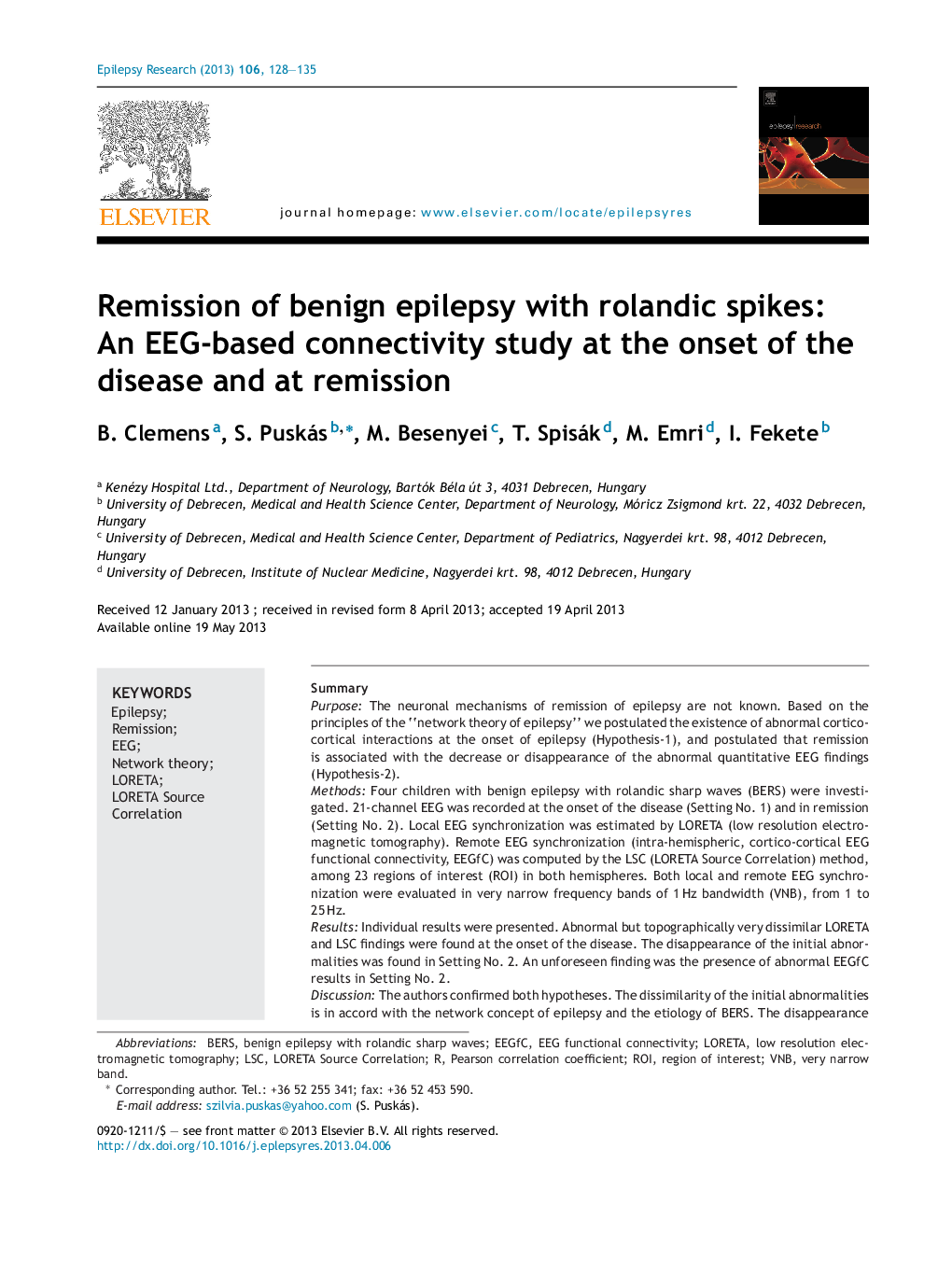| کد مقاله | کد نشریه | سال انتشار | مقاله انگلیسی | نسخه تمام متن |
|---|---|---|---|---|
| 6015738 | 1579916 | 2013 | 8 صفحه PDF | دانلود رایگان |

- The active phase of BERS is characterized by disturbed EEG resting-state functional connectivity.
- In terminal remission the initial abnormalities disappear (“normalization”).
- In terminal remission new functional connectivity abnormalities emerge (“compensation”).
- EEG is a useful tool to explore the neuronal mechanisms of terminal remission.
SummaryPurposeThe neuronal mechanisms of remission of epilepsy are not known. Based on the principles of the “network theory of epilepsy” we postulated the existence of abnormal cortico-cortical interactions at the onset of epilepsy (Hypothesis-1), and postulated that remission is associated with the decrease or disappearance of the abnormal quantitative EEG findings (Hypothesis-2).MethodsFour children with benign epilepsy with rolandic sharp waves (BERS) were investigated. 21-channel EEG was recorded at the onset of the disease (Setting No. 1) and in remission (Setting No. 2). Local EEG synchronization was estimated by LORETA (low resolution electromagnetic tomography). Remote EEG synchronization (intra-hemispheric, cortico-cortical EEG functional connectivity, EEGfC) was computed by the LSC (LORETA Source Correlation) method, among 23 regions of interest (ROI) in both hemispheres. Both local and remote EEG synchronization were evaluated in very narrow frequency bands of 1Â Hz bandwidth (VNB), from 1 to 25Â Hz.ResultsIndividual results were presented. Abnormal but topographically very dissimilar LORETA and LSC findings were found at the onset of the disease. The disappearance of the initial abnormalities was found in Setting No. 2. An unforeseen finding was the presence of abnormal EEGfC results in Setting No. 2.DiscussionThe authors confirmed both hypotheses. The dissimilarity of the initial abnormalities is in accord with the network concept of epilepsy and the etiology of BERS. The disappearance of the initial abnormalities reflects “normalization” of network dynamics while the emergence of new EEGfC abnormalities is interpreted as “compensation”.ConclusionEEG-based local and remote connectivity (EEGfC) are appropriate tools to describe network dynamics in the active state of BERS and in remission.
Journal: Epilepsy Research - Volume 106, Issues 1â2, September 2013, Pages 128-135